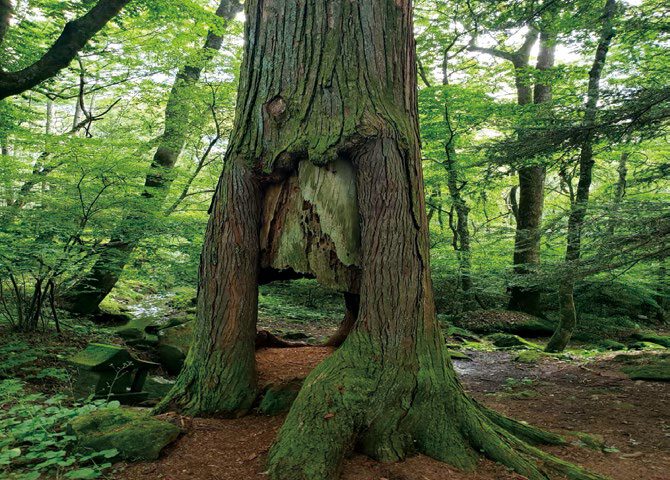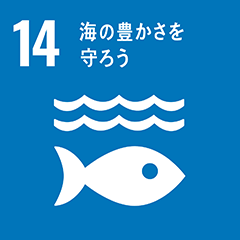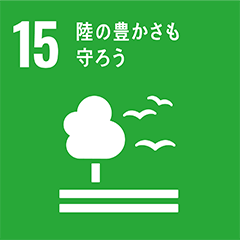Inochi Declaration
Rediscover traditional Japanese views of nature—embodied in the concept of “Chinju no Mori” (sacred groves) and the belief in “Yaoyorozu no Kami “(eight million deities)—and apply them to contemporary challenges such as biodiversity conservation, ecosystem restoration, and human-nature coexistence.
Global environmental issues typically fall into two broad categories: climate change, including global warming, and biodiversity loss along with ecosystem degradation. While public discourse has historically emphasized the first, recent years have seen a growing awareness of the second. Within this shift, an important perspective emerges: the connection between biodiversity and traditional Japanese cultural beliefs—especially the concept of “Yaoyorozu no Kami”, the “eight million deities” that inhabit all aspects of nature.
This ancient belief reflects a worldview in which symbolic deities’ dwell throughout the natural world, inspiring reverence and humility. It also aligns with the concept of “Chinju no Mori” (the Shinto shrine forests), sacred groves that protect and are protected by local communities. These spaces suggest a symbiotic relationship between humans and nature, reinforcing the principle that biodiversity must be respected and preserved not only for its scientific or utilitarian value but as a cultural and spiritual imperative rooted in tradition. In March 2023, the Japanese government adopted its new National Biodiversity Strategy and Action Plan 2023–2030, aligned with the Kunming-Montreal Global Biodiversity Framework agreed upon in December 2022. Notably, this national strategy explicitly acknowledges the cultural significance of nature in Japan, stating:
“Based on the understanding that keeping Japanese views on coexistence between people and nature, such as the respect for nature as symbolized by the Shinto shrine forests (Chinju no Mori) and yaoyorozu-no-kami (eight million dieties), and local culture (traditional events, food culture, local industry, and so on) deep-rooted in the abundance of biodiversity, and the importance placed by the Japanese on maintaining the way of life and land use in the local community according to local nature, the government will implement measures to collect and share such traditional culture and views on nature, as well as knowledge and techniques for utilizing the benefits of nature in the local community and avoiding disasters. In light of the connections among forests, the countryside, rivers, and the seas, the government aims to communicate through various opportunities, the cultural and spiritual abundance that nature provides, the fact that nature supports local traditions, food, industry, and culture, and the inheritance of the Japanese people’s perspective of nature coexisting with people in harmony, to deepen local residents’ understanding of and concern for nature, and to promote biodiversity conservation activities in the region.”

The forest at the southern foot of Yatsugatake

Kamikura Shrine, Wakayama Prefecture
This recognition underscores a vital point: culture, though absent from the 17 goals of the United Nations Sustainable Development Goals (SDGs), is not a “problem” to be solved, but rather a wellspring of motivation and value. Cultural frameworks play a powerful role in guiding ecological behavior, fostering emotional and moral connections with the environment.
One example is the work of the Chinju-no-Mori Community Institute, which connects Japan’s cultural heritage— represented by sacred groves—with contemporary issues such as renewable energy, holistic wellness, and regional revitalization. In Chichibu, Saitama Prefecture, home to the UNESCO-recognized Chichibu Night Festival and Chichibu Shrine, the institute has introduced small-scale hydropower in partnership with local residents. Profits from the electricity are intended to be reinvested into satoyama (rural forest) restoration and environmental conservation. This initiative, awarded the Prime Minister’s Prize for Green Promotion in 2022, is driven by local affection for Mount Bukō (the shrine’s sacred mountain) and the broader cultural landscape—demonstrating how deep cultural identity can mobilize conservation.
Through such efforts, by 2030 we envision widespread public recognition of the link between biodiversity and traditional Japanese culture. People will take local, personal action informed by this awareness. By 2050, these cumulative efforts are expected to lead to restored ecosystems and a society in which humans and nature coexist harmoniously.
The Inochi Forum, in collaboration with organizations such as the Chinju-no-Mori Community Institute, will continue to promote initiatives that rediscover the value of traditional Japanese nature-based spirituality. These efforts will support biodiversity preservation and address modern ecological challenges by fostering renewed awareness of the sacred relationship between humans and nature.
[References]
・Chinju-no-Mori Community Institute
https://c-chinju.org/
・Kyoto University Institute for the Future of Human Society
https://ifohs.kyoto-u.ac.jp/
[Action Platform]
Environment and Biodiversity / SDGs+Beyond
[SDGs]



